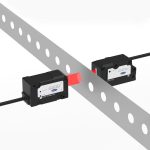In the intricate web of modern technology, pressure sensor control systems often operate behind the scenes, yet their impact is profound. These systems are the silent guardians of efficiency, safety, and precision across countless industries. From automotive engineering to healthcare, pressure sensors provide critical data that enables automated responses, ensuring that processes run smoothly and reliably. Without them, many of the advancements we take for granted would simply not be possible.
At their core, pressure sensor control systems measure the force exerted by fluids or gases and convert this data into actionable insights. Whether it’s monitoring tire pressure in vehicles to enhance fuel efficiency and safety or regulating airflow in HVAC systems for optimal comfort, these sensors are indispensable. Their ability to deliver real-time feedback allows for immediate adjustments, preventing potential failures and promoting seamless operation in dynamic environments.
The applications of pressure sensor control systems are as diverse as they are impactful. In the medical field, they are vital in devices such as ventilators and blood pressure monitors, where accuracy can mean the difference between life and death. Industrial manufacturing relies on them to maintain precise conditions in machinery, reducing waste and improving product quality. Even consumer electronics, like smartphones and wearables, incorporate miniature pressure sensors to enhance user experience through features like altitude tracking or weather forecasting.
One of the most compelling aspects of these systems is their evolution. Early pressure sensors were mechanical and often cumbersome, but today’s versions are sleek, digital, and incredibly sensitive. Innovations in microelectromechanical systems (MEMS) have miniaturized sensors without sacrificing performance, making them more accessible and versatile than ever. This progress has opened doors to new applications, including smart agriculture, where soil pressure monitoring helps optimize irrigation, and aerospace, where sensors ensure cabin pressure remains safe for passengers at high altitudes.
Despite their sophistication, pressure sensor control systems are designed for reliability and durability. They are built to withstand harsh conditions, from extreme temperatures to corrosive environments, ensuring consistent performance over time. This robustness is critical in sectors like oil and gas, where equipment failure can lead to catastrophic outcomes. By providing early warnings of pressure anomalies, these systems help avert disasters, underscoring their role as essential components in risk management strategies.
Looking ahead, the future of pressure sensor control systems is bright. Integration with the Internet of Things (IoT) is set to revolutionize how data is collected and utilized. Imagine smart cities where pressure sensors in water pipelines detect leaks instantly, conserving resources and reducing costs. Or wearable health devices that continuously monitor vital signs, alerting users and medical professionals to potential issues before they escalate. The possibilities are limitless, driven by ongoing advancements in sensor technology and data analytics.
In conclusion, pressure sensor control systems may not always be in the spotlight, but their contributions are invaluable. They empower industries to operate with greater intelligence, efficiency, and safety. As technology continues to evolve, these systems will undoubtedly play an even more pivotal role in shaping our world. Embracing their potential is not just an option—it’s a necessity for progress.




Leave a Message